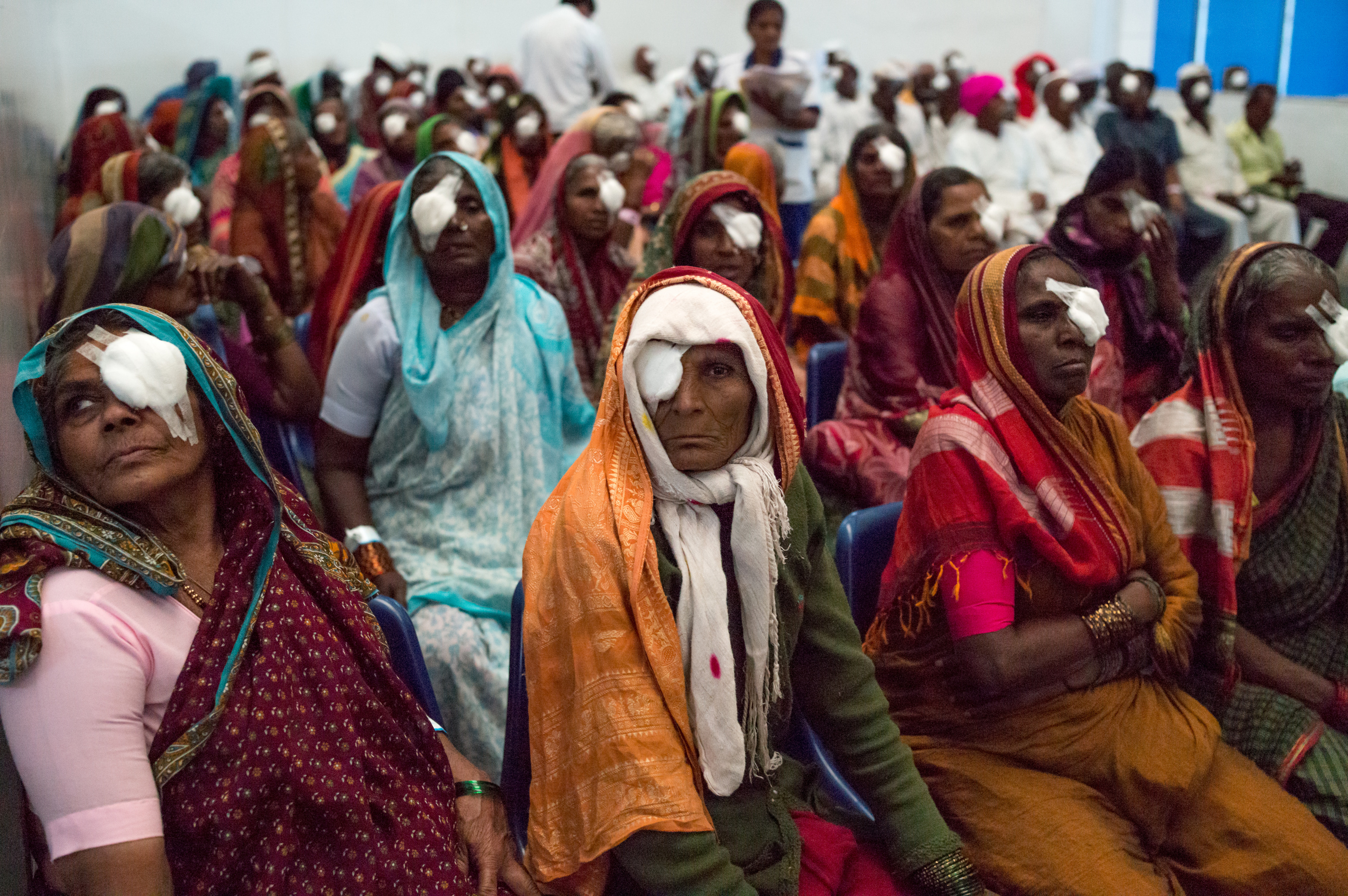This project is supported by the L'OCCITANE Foundation.
Context
India has the largest number of individuals suffering from visual impairment and blindness in the World, with estimated 270 million people with vision loss in 2020 (IAPB Vision Atlas).
According to the latest National Blindness & Visual Impairment Survey India (2015-2019), there are estimated 4.95 million blind persons and 35 million vision impaired persons, out of which 0.24 million are blind children. Around 70.7% of the causes of blindness in the country are treatable and 24.4% preventable. Cataract and refractive errors remain the leading causes of blindness and visual impairment respectively. Early detection is hampered by the insufficient number of eye care personnel, with 13 ophthalmologists, 39 optometrists and 29 allied ophthalmic personnel per million (IAPB Vision Atlas).
A study on blindness conducted specifically in the state of Andra Pradesh (Dandona et al. 2001) reveals that the prevalence of blindness in rural areas of the state is 2.03%, of which 80% is treatable and preventable. Women and those belonging to marginalized communities, particularly in rural areas, are at a higher risk of having blindness. Estimates are that effective treatment of 95% of the blindness due to cataract and refractive error would have resulted in prevention of 3.40 and 7.45 million blind-person-years, respectively. However, health and education, especially for the tribal and rural population, as well as people with disabilities, are neglected issues in this region. Tribal population specifically accounts for one-fourth of the population in the entire Andra Pradesh State and still lag behind other groups, especially in terms of educational attainments, health indicators and social outcomes, income, land ownership and access to basic infrastructure.
Supported Project
From 2023 to 2026, the L'OCCITANE Foundation supports CBM Italia Onlus and its project which aims to reduce and prevent avoidable blindness and visual impairment among children aged 0-18 years living in most vulnerable indigenous communities and surrounding coastal districts in East Godavari District, Kakinada & Konaseema in the state of Andhra Pradesh. It does so through a comprehensive approach encompassing awareness, capacity building of service providers at community, primary and secondary level on different child eye conditions and provision of high-quality pediatric ete specialised services.
In particular, the project provides high quality nd comprehensive eye health cares to children in the most marginalised rural areas, including girls, children with disabilities and those from indigenous population. In doing so, it contributes towards sustainable coverage, availability, accessibility and quality of child eye health services among marginalised populations, bridging the current gaps in service provision and paving the way for the Continuum of Care.
The project will work to create an integrated and people centred child eye health system, for both screening and referral services, tailored also to geographical accessibility and socio-cultural acceptance. Strengthened screening will be matched with effective referrals to the tertiary level hospital, run by the Srikiran Institute of Ophthalmologist (S.I.O.), a partner of this project, whose capacities to deliver high quality and inclusive child eye health services will be further strengthened.
Some Figures
Budget 599,886 euros
Goal 188,220 beneficiaries
Goal 1,100 eye health actors trained
Result year 1 40,580 beneficiaries
Result year 1 1,237 actors trained
